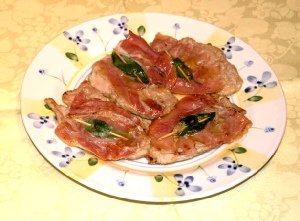Hello Friends,
Perhaps no other country in the world has a cooking style so finely fragmented into different divisions. So why is Risotto typical of Milan, why did Tortellini originate in Bologna, and why is Pizza so popular in Naples? This is so for the same reason that Italy has only one unifying Italian language, yet hundreds of different spoken dialects. Italy is a country of great variety, and Italian cooking is just another aspect of the diversity of Italian culture. This diversity in Italian food stems largely from peasant heritage and geographical differences. Italy is a peninsula separated from the rest of the continent by the highest chain of mountains in Europe. In addition, a long spine of mountains runs north to south down through this narrow country.
These geographic features create a myriad of environments with noticeable variations: fertile valleys, mountains covered with forests, cool foothills, naked rocks, Mediterranean coastlines, and arid plains. A great variety of different climates have also created innumerable unique geographical and historical areas.
But geographical fragmentation alone will not explain how the same country produced all of these: the rich, fat, baroque food of Bologna, based on butter, parmigiano, and meat; the light, tasty, spicy cooking of Naples, mainly based on olive oil, mozzarella, and seafood; the cuisine of Rome, rich in produce from the surrounding countryside; and the food of Sicily, full of North African influences.
The explanation is actually hidden in the past; the multitudes of food styles of Italy mainly result from its history. Divided for a long time into many duchies, princedoms, kingdoms, and states—often hostile to one another—political unification in Italy did not occur until 1861. Many populations in the past three thousand years have occupied Italian territory, and most of them contributed their own traditions.
Today we'll be trying one of my family's favorites, Saltimbocca. Saltimbocca are veal scaloppini prepared very simply by assembling together slices of tender veal, prosciutto, and fresh sage leaves. While there are many variations on Saltimbocca with the addition of cheese or Marsala wine, tonight's version opts for the simplest recipe, just as it is cooked in Roman kitchens.
Saltimbocca are very popular in Italy, but in the United States it is often quite difficult to find a butcher who knows how to properly cut them. Saltimbocca are thin slices of veal cut from the top round, and the slices must be cut across the vein of the muscles so that the fibers of the meat are short and the meat is tender. If they are cut along the vein, as they usually are in the States, then the meat curls and toughens while cooking. To prevent the meat from toughening, simply make the slices very thin and thump them with a meat pounder.
Veal Scaloppini with Prosciutto and Sage - Saltimbocca alla Romana

Ingredients
2 oz flour
salt
4 veal scaloppini slices, about 1 lb
4 prosciutto slices, approximately 3 oz
4 leaves of fresh sage
2 – 3 tablespoons extra-virgin olive oil
3 tablespoons (40 gr) butter
pepper
1/2 cup (120 cc) dry white wine
Directions
Put the flour on a large plate and add a pinch of salt. Dredge the veal slices in the flour, so that they are all well covered on both sides. Shake away the excess flour.
Place on each slice of meat, a slice of prosciutto and a leaf of fresh sage. Secure the three together with a toothpick.
In a large frying pan, put the oil and the butter, and turn the heat to medium. When the butter begins foaming, place the meat in the pan. Season with salt and pepper and sauté gently on both sides until light brown.
Add the wine, turn the heat to medium high, and let the wine evaporate. Place on individual plates, covering the slices with the sauce and serve warm.
Have A Terrific Week My Friends,
Phil